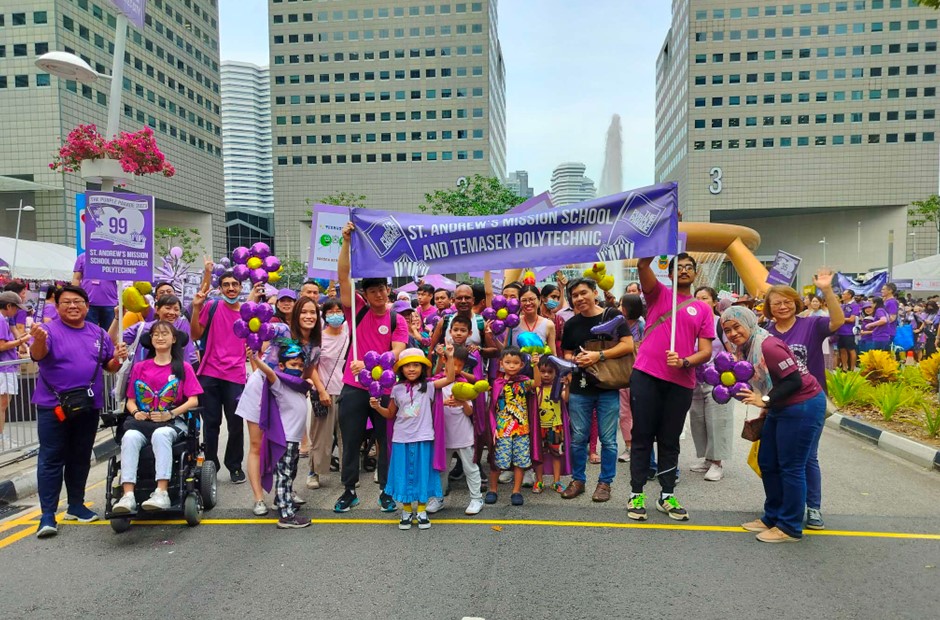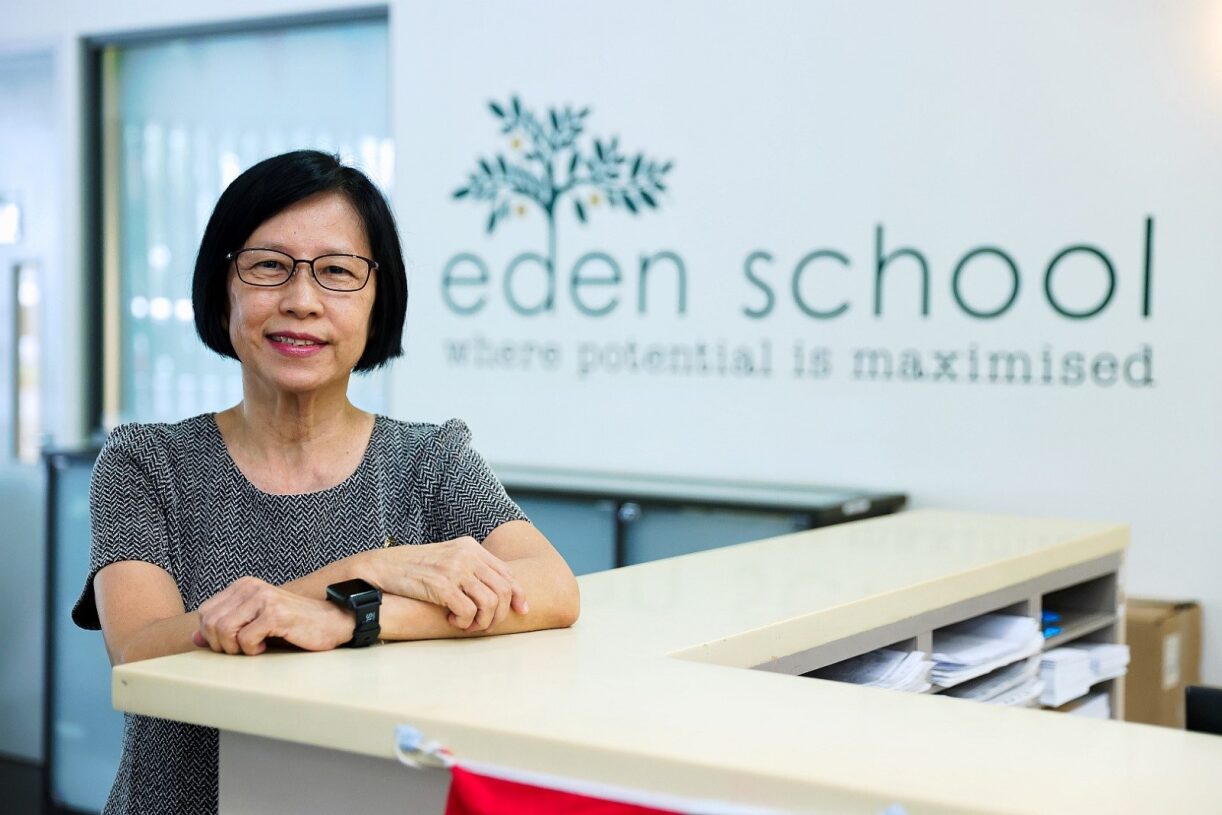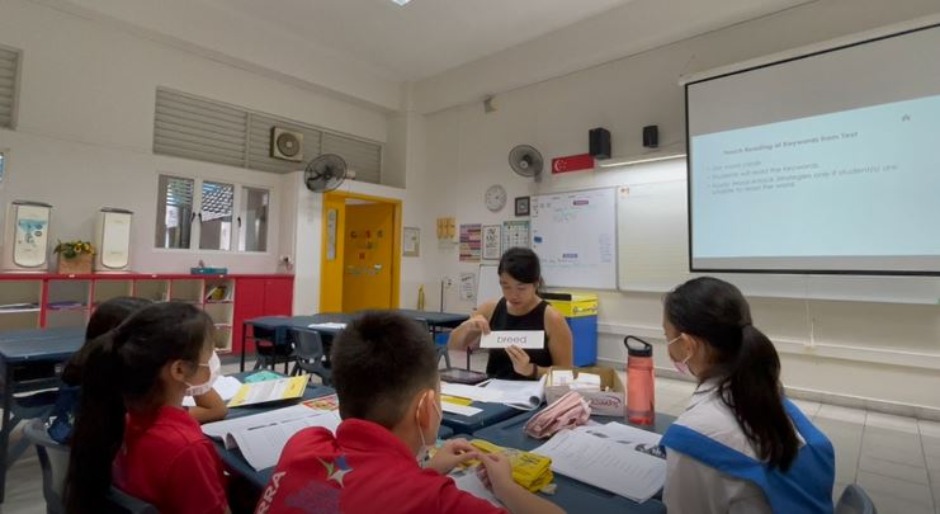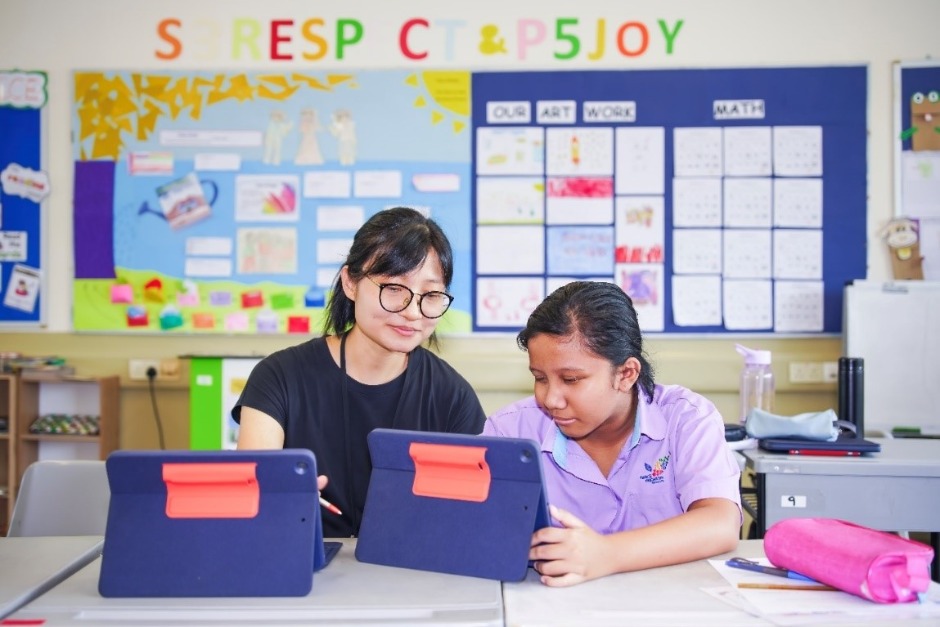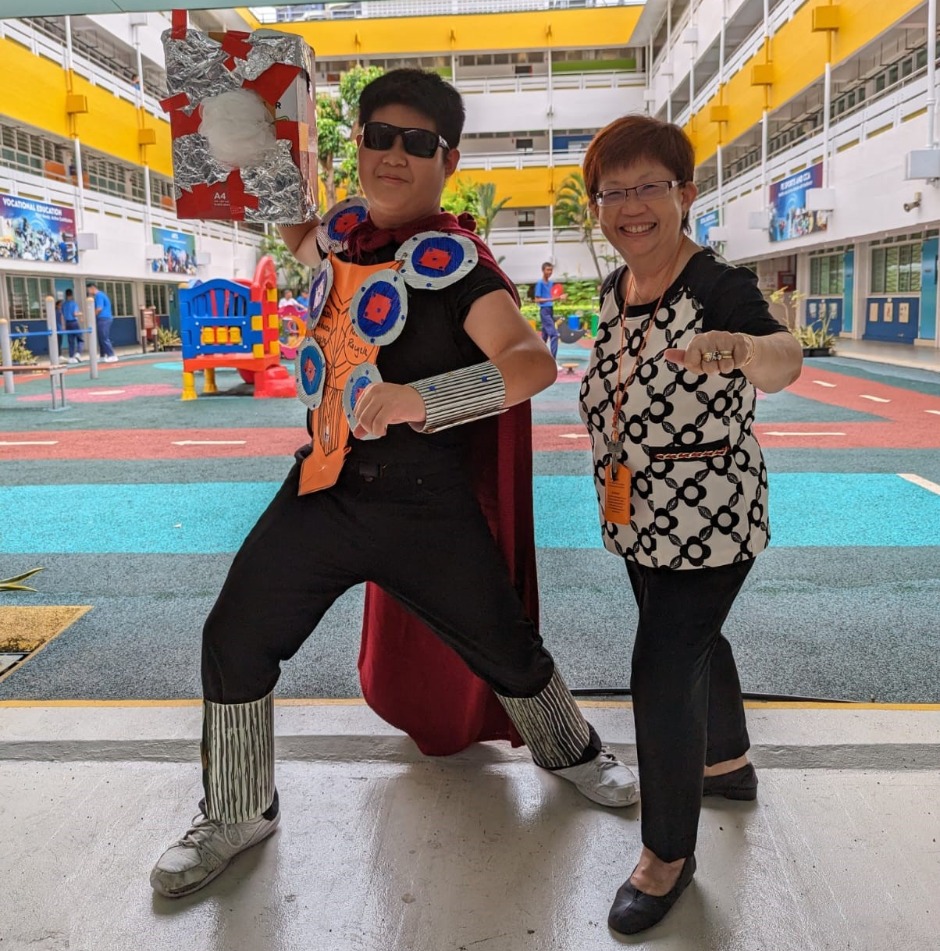Granting A Helping Hand and More in Special Education
28 Apr 2011

Like in any classroom, the SAAS curriculum includes story-telling using colourful and well-illustrated books to engage students’ interest.
It was a simple “Good afternoon”. But that was enough to make her day for Mdm Nur Shafarina Ibrahim had been trying for over two months to coax a boy at her school to return her cheerful greetings.
In another classroom, a student pays heed, for the very first time, to a visual clue to be quiet, after three months of patient, repeated instruction. Still, the response was no guarantee that he would react similarly the next time he sees the same cue card. “What works today may not work tomorrow, or even later in the day,” explains Mr Thomas Khoo. Like Mdm Shafarina, Mr Khoo works as a teacher-aide at St. Andrew’s Autism School (SAAS), where they support the teachers by providing basic coaching and behavioural guidance to the students.
Supporting teachers in special education classes
Serving students aged 7 to 18, SAAS is one of three autism spectrum disorder-specific special education (SPED) schools in Singapore. SAAS caters to the needs of children with autism, a neurological disorder with no known cause or cure. People with autism have difficulty relating to others, problems communicating and may behave in socially inappropriate ways. But with active and sustained intervention, they can learn to adequately care for themselves, interact with other people and attain a degree of independence.
SAAS provides a modified curriculum that includes training, emotional and psychological support to equip students with the skills needed to lead an independent life. As autism can range from mild to very severe, no two individuals show the same symptoms. At SAAS, most classes serve students with moderate to severe autism, with a few of the school’s 19 classes having up to two students with exceptionally high needs, who require greater attention and care.
This is where teacher-aides come in to provide small-group coaching or individual guidance to students so that the teacher can focus on teaching the entire class with minimal disruption. Mdm Shafarina, for example, regularly provides one-to-one coaching for students in her classes for 10- to 12-year olds, patiently repeating words and phrases until they follow her lead. Meanwhile, Mr Khoo serves this role in classes for 14- to 16-year old students.
For both teachers and teacher-aides, a deep understanding of each student’s behavioural needs is essential. People with autism can have very intense sensory responses to seemingly harmless things like certain colours, lights, sounds or movements. Thus, Mdm Tan Pek Keow, a teacher-aide who helps in classes for 10- to 12-year olds, explained that the staff must know what might cause a “meltdown” that could result in very disruptive behaviour.
Helping where it counts
SAAS maintains a teacher-student ratio of 1:3. It might appear generous, but the experience of the teacher-aides suggests otherwise. For instance, if a student has a “meltdown” and behave aggressively, the first priority for both the teacher and teacher-aide would be to keep the entire class, including the “meltdown” student, out of harm’s way. Furthermore, the disruption could sow confusion among the other students and trigger further agitation. In the interest of safety, more manpower is undeniably better than less.
Recognising such needs, MOE recently announced stepped up support for SPED schools. This includes an upgrading of SPED school infrastructure and a High Needs Grant that sets aside up to $2.3 million a year to hire additional teacher-aides for classes with high needs students.
For SAAS Principal Ms Diana Chin, these measures are a boon for both student and staff. “The teacher-aides support our teacher-therapists in various capacities,” she explained. “This includes helping to prepare teaching materials so that our teacher-therapists can devote more attention to enhancing teaching and training programmes, reviewing and developing the curriculum, exploring collaborative programmes and providing in-house training. Given their close relations with the students, Ms Chin adds that teacher-aides are also “an important resource as research assistants” who can provide valuable input to educators who design intervention programmes for special education students.
Despite the challenges, Mdm Shafarina, who is known to her classes as Mdm Rina, expresses her view that “the students are teachable.” Having made a mid-career switch to become a teacher-aide, Mdm Rina added, “I want to help them as best as I can.”
On his part, Mr Khoo looks forward to more support for one-to-one attention in high needs classes. Mdm Tan, too, hopes that the High Needs Grant will usher in the means to allow the school to “better tailor our programmes to meet our students’ unique needs.” MOE’s latest initiative includes provisions to provide customised training to both teachers and teacher-aides in managing difficult behaviour, so it’s quite likely that SAAS’s teacher-aides will continue to have their hands full, but not without a helping hand to support and sustain their daily endeavour.




